Invented by Navid Abedini, Muhammad Nazmul Islam, Juergen Cezanne, Bilal Sadiq, Qualcomm Inc
Random access is a fundamental aspect of wireless communication systems, allowing multiple devices to access the network simultaneously. However, traditional random access methods suffer from various limitations, such as collisions, latency, and inefficient resource utilization. To overcome these challenges, researchers and industry players have been exploring innovative techniques based on synchronization signal block transmissions.
Synchronization signal block (SSB) is a critical component of 5G and beyond networks, providing synchronization and channel estimation information to user devices. Leveraging the SSB for random access response enables more efficient and reliable communication, as it allows devices to synchronize and access the network with minimal interference.
One of the key advantages of using SSB-based random access response techniques is the improved collision resolution. By utilizing the synchronization information provided by the SSB, devices can avoid collisions and transmit their access requests at different time slots. This reduces the probability of collisions and improves the overall network efficiency.
Furthermore, SSB-based techniques offer lower latency compared to traditional random access methods. The synchronization information provided by the SSB allows devices to quickly synchronize with the network, reducing the time required for access request transmission and response. This is particularly crucial for time-sensitive applications, such as real-time video streaming and autonomous vehicles.
In addition to improved collision resolution and lower latency, SSB-based random access response techniques also enable efficient resource utilization. By synchronizing devices and allocating specific time slots for access requests, these techniques ensure optimal utilization of network resources. This results in higher network capacity and improved overall performance.
The market for random access response techniques based on synchronization signal block transmissions is witnessing significant growth due to the increasing adoption of 5G and beyond networks. These techniques are not only applicable to traditional mobile communication systems but also find applications in emerging technologies such as Internet of Things (IoT) and machine-to-machine (M2M) communication.
Several companies and research organizations are actively involved in developing and commercializing SSB-based random access response solutions. These include major players in the telecommunications industry, as well as startups focusing on wireless communication technologies. The market is highly competitive, with companies striving to develop innovative solutions that offer improved performance and efficiency.
In conclusion, the market for random access response techniques based on synchronization signal block transmissions is experiencing significant growth and offers promising opportunities for both established players and startups. These techniques address the limitations of traditional random access methods and provide improved collision resolution, lower latency, and efficient resource utilization. As the demand for efficient and reliable communication systems continues to grow, the market for SSB-based random access response techniques is expected to expand further in the coming years.
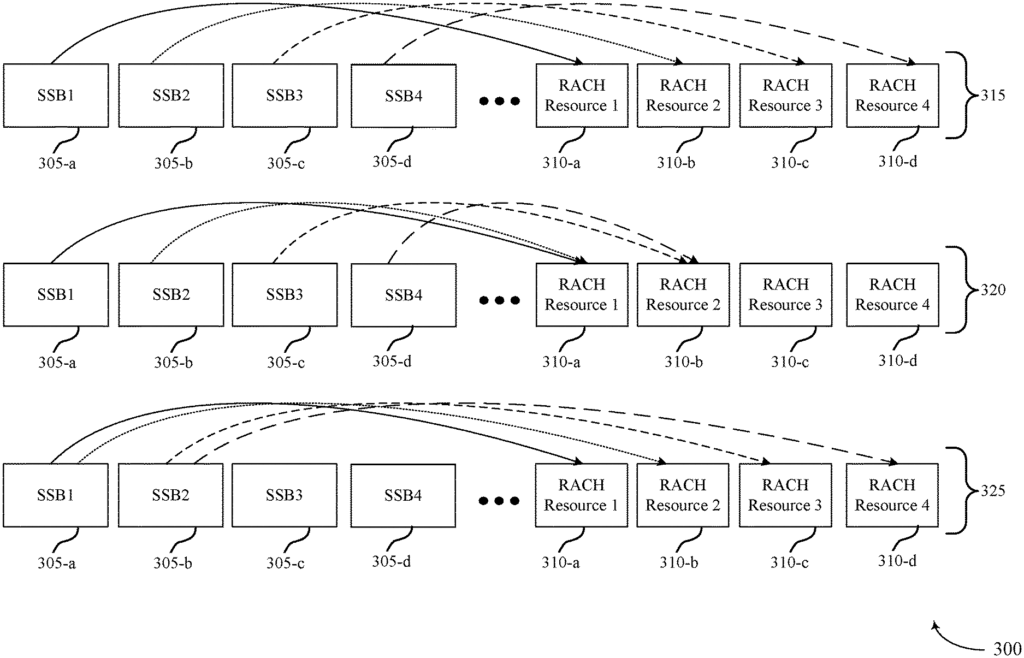
The Qualcomm Inc invention works as follows
The description of methods, systems and devices for wireless communication provides for the transmission of random-access preambles by a UE based, at least in part, on a synchronization block (SSB), which is received from a station base. Base station may transmit a random response based on at least part of a random resource used for the preamble. This could be an SSB that’s associated with the resource, an SSB Index, or SSB Indexes. In some cases, a random access resource may map two or three SSBs. A single random-access radio network temporary identifier, or two or multiple RARNTIs, can be used to identify each of the SSBs. In some cases a single random response message may contain information about each UE transmitting a random preamble within the single random resource.
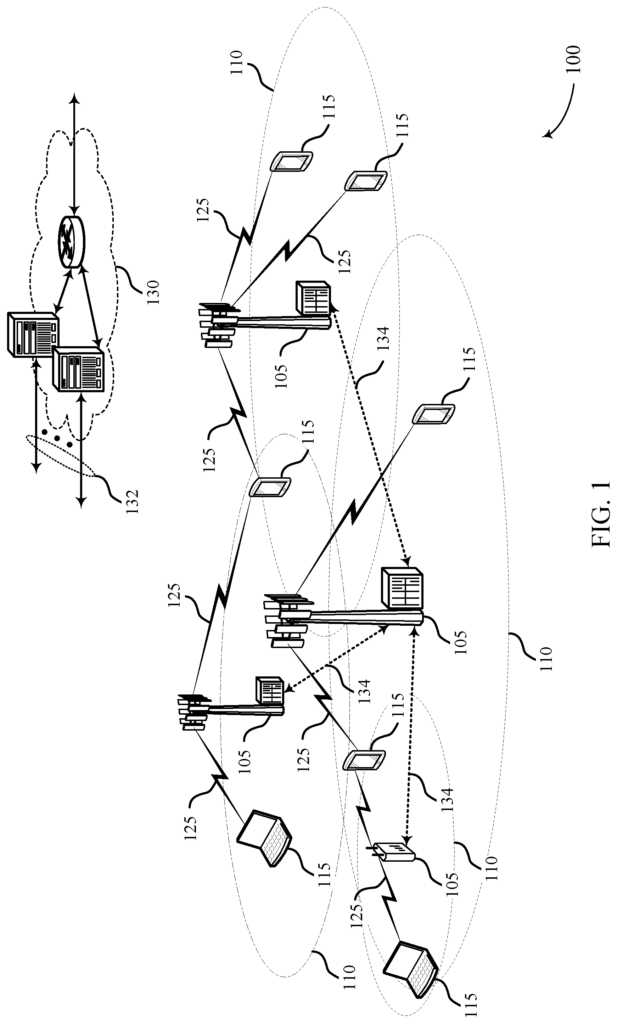
Background for Random Access Response Techniques Based on Synchronization Signal Block Transmissions
The following is a general description of wireless communication and, more specifically, random access response methods based on synchronization signals block transmissions.
Wireless communications systems are used to deliver various types of content, such as voice, video and packet data. They also provide messaging, broadcasting, and other forms of communication. These systems can support communication with multiple users through sharing system resources (e.g. time, frequency and power). These systems can include the fourth-generation (4G) Long Term Evolution systems (LTE), LTE-Advanced systems (LTE A) and the fifth-generation (5G) New Radio systems (NR). These systems may employ technologies such as code division multiple access (CDMA), time division multiple access (TDMA), frequency division multiple access (FDMA), orthogonal frequency division multiple access (OFDMA), or discrete Fourier transform-spread-OFDM (DFT-S-OFDM). Wireless multiple-access communication systems may consist of a number base stations or nodes that support multiple communication devices simultaneously. These communication devices are also known as “user equipment” (UE).
In some deployments (such as a NR implementation), a base station can transmit a series of synchronization signals (SS) blocks, which a UE may use to get various system and timing information. In some cases, SS Blocks may be associated with random access resources, which a UE can use to send a random request to access the system via the base station upon detection of the SS Block. “In some cases, a millimeter-wave (mmW), system can be used. Each SS block is transmitted as a directional beam. The UE’s detection of the SS blocks may indicate the beamforming parameters to be used to transmit directional transmission beams.
The described techniques are improved methods, devices or apparatuses which support random access responses based on SS blocks transmissions. The described techniques generally provide for the transmission of random requests (e.g. random access preambles), from a UE, based on a synchronization message that is received from a basestation in an SS Block (SSB). The SSB can be sent as part of a base station’s beam sweeping process.
In certain cases, one SSB or multiple SSBs can be mapped to a random access resource or resources. One SSB can be mapped with one random resource. Multiple SSBs can be mapped with one random resource. In some cases, multiple SSBs can correspond to different random access resources that are associated with a single RA-RNTI or multiple RARNTIs. In some cases, RA-RNTIs may be determined based upon random access resources that the UE uses.
In some cases, a resource used for the transmission of the random-access preamble can be determined based upon the SSB. Since the SSBs correspond to resources for the transmission of random access preamble, and since the resources used to transmit random access preamble are the RA RNTI for the UE in these cases, the RA RNTI can be determined based upon the SSB selected. A random response can be sent from the base station based upon a random resource used for the preamble of the random-access, a random resource associated with an SSB, an SSB Index, or combinations thereof. “In some cases, a random access resource may map two or three SSBs. A single random-access radio network temporary identifier, or two or multiple RARNTIs can be used to identify each of the SSBs.
In some cases, a random-access response (RAR), may include an indication to the UE (e.g. a bitmap, a flag or other information) indicating whether a station will respond to UE, and/or when a station can respond to UE. The UE can then stop or not perform a blind search to find its RAR if the base station decides not to respond. This reduces resource overhead and power consumption. In some cases, a randomly access response message may contain information about each UE transmitting a random preamble within the random access resource. Other times, multiple random access response message may contain different information for subsets of UEs who transmit random preambles within the random access resource.
A wireless communication method is described. The method can include: receiving, at a UE, a synchronization block (SSB), of a plurality SSBs, transmitted by a station base, identifying random resources for transmitting a preamble random, transmitting a preamble random to the station base using the random resources, monitoring for a response random from the station base within a control channels that contains cyclic redundancy bits scrambled with a random-access radio network temporary identifier.
The invention is a wireless communication apparatus. The apparatus can include means to receive, at a UE, a synchronization block (SSB) from a plurality SSBs sent by a basestation, means to identify random resources for transmitting a preamble based upon the received SSBs, means to transmit the random request using the random resources, and means to monitor for a response by the basestation within a control channels that includes cyclic redundant check bits scrambled with a random-access radio network temporary identifier.
Another wireless communication apparatus is described.” The apparatus can include a processor in electronic communication with a memory, and instructions in the memory. The instructions can be used to instruct the processor to “receive, at a UE, a synchronization block (SSB), of a plurality SSBs, transmitted by a network base station; identify random resources for transmitting a preamble based upon the received SSB; transmit the preamble using the random resources to the network base station; monitor for a response from the basestation within a control-channel that includes cyclic-redundancy-check bits scramble
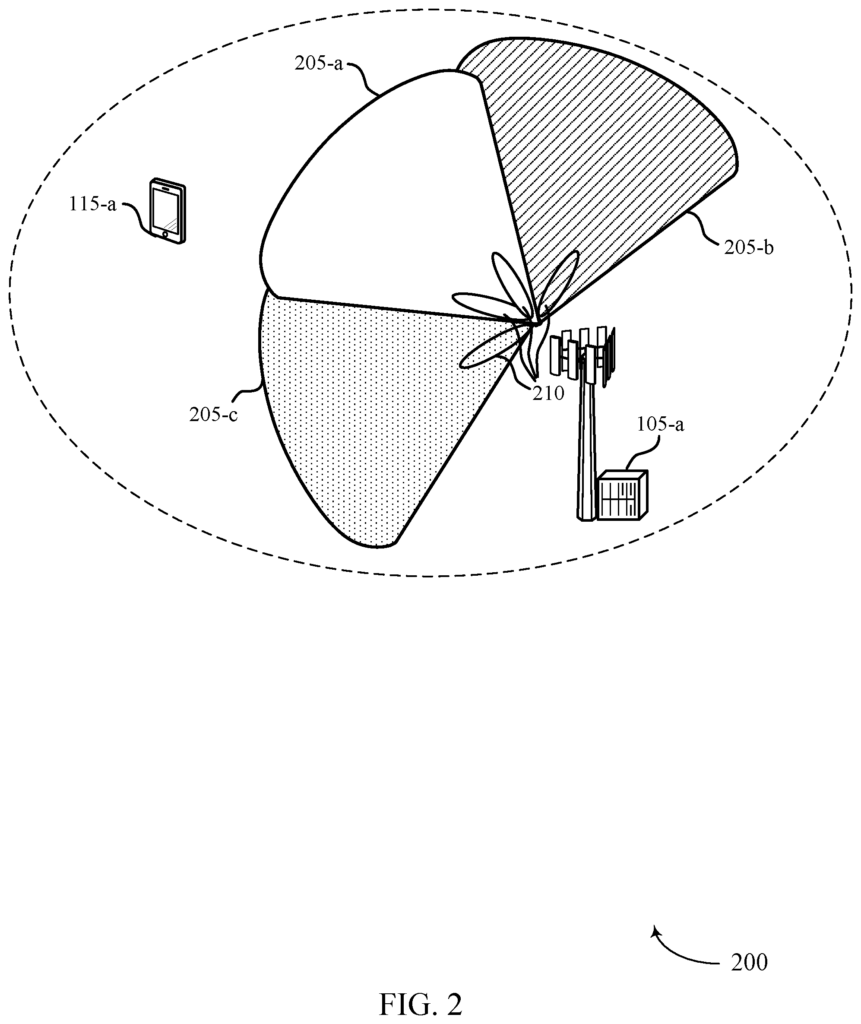
A non-transitory, computer-readable medium is described for wireless communication. The non-transitory medium can include instructions that cause a processor, at a user device (UE), to receive a synchronization block (SSB), of a plurality SSBs, transmitted by a wireless base station. It then identifies random resources for transmitting a preamble, transmits the preamble using the random resources to the basestation, monitors for a response from the base within a control channels including cyclic redundancy bits scrambled with a Random Access Radio
Some examples of the method described above, the apparatus and the non-transitory medium may also include features, processes, means or instructions to determine the RARANTI based upon a symbol index in a slot. Some examples of method, apparatus and non-transitory computing-readable medium described may include further processes, features or instructions to determine the RARANTI based upon a slot index in a subframe. In some examples, the method, apparatus and non-transitory computing-readable medium described above may further include processes, features, means, or instructions for determining the RA-RANTI based on a slot index within a subframe.
In some examples, the method, apparatus and non-transitory machine-readable medium described herein may include additional processes, features, methods or instructions to determine the RA RNTI based upon the SSB Index when a group of SSBs is mapped to a random access resource. In some examples, the SSB is a relative SSB among the set SSBs mapped to a single random access resource. In some examples, the RA RNTI of a SSB can be independent of its SSB Index when a SSB is mapped into a random access resource.
In some examples of the above described method, apparatus and non-transitory readable medium, multiple RARNTIs can be associated with the identical random access resource, and they may also be associated with corresponding SSBs. In some examples, a single RARNTI can be associated to multiple random resources, while one or more SSBs are associated with random resources.
In some examples of the methods, apparatus and non-transitory computers-readable medium described, a single message corresponding to a randomly-generated resource contains information about each UE transmitting a random-access preamble in the first random-access resource. In some examples, a method, apparatus and non-transitory computing-readable medium may transmit two or more random responses, each of which may correspond to a subset of the plurality of users.
In some examples, monitoring the random response can include identifying multiple random responses. Some examples of method, apparatus and non-transitory computers-readable medium described may include additional processes, features or instructions to order the two or three random access responses according to a quality metric. Some examples of method, apparatus and non-transitory computers-readable medium described may include further processes, features or means for decoding the two or three random access responses in accordance with the ordered. “Some examples of the method and apparatus described above can also include features, methods, or instructions to stop the decoding process after one of the random access responses has been successfully decoded.
In some examples of method, apparatus and non-transitory computing medium described above, a random access message can include an indication of SSBs or random resources or preamble IDs. In some examples, the method, apparatus and non-transitory computing medium described above may include an indication of one or more preamble IDs, one or more SSBs (random access resources), a bitmap identifying the preambles, SSBs and random access resources. The indication can also be a flag, a graphical representation identifying the random access resource, specific information about additional random response messages, etc. In some examples, random access responses may include a preamble.
In some examples, the method, apparatus and non-transitory computing medium described above can further include processes or features that identify configuration information that indicates if one or more RA-RNTIs are configured for one or several SSBs, if single or multiple random response messages are received based on a random access preamble or a combination thereof. In some examples, the method, apparatus and non-transitory computing-readable medium described may include predetermined configurations, configurations received directly from the base stations, such as a MIB, remaining minimum system info (RMSI), a system information block message (SIB), a RRC message, configurations received via an upper layer or based on a UE’s capability, configurations received by a different base, configurations that are periodically updated by a UE or combinations thereof. In some examples, the configuration information of each SSB of the plurality may be different. The configuration information in some examples of method, apparatus and non-transitory medium described above may be based upon a number of SSBs that have been transmitted.
A wireless communication method is described. The method can include identifying a random resource configuration associated with a synchronization signal block (SSB), a number random responses to be transmitted associated with a one random resource configuration, and a temporary random radio network identifier (RARNTI) associated with a number random responses.
The invention is a wireless communication apparatus. The apparatus can include means to identify a configuration for random resources associated with synchronization signals blocks (SSBs), a quantity of random responses to be transmitted associated with random resources, a random radio network temporary identifier for a transmission control channel associated with a number random responses, a means to transmit a plurality SSBs via a single random resource to a minimum of a user equipment (UE), a means to receive a random preamble by at least a UE through a
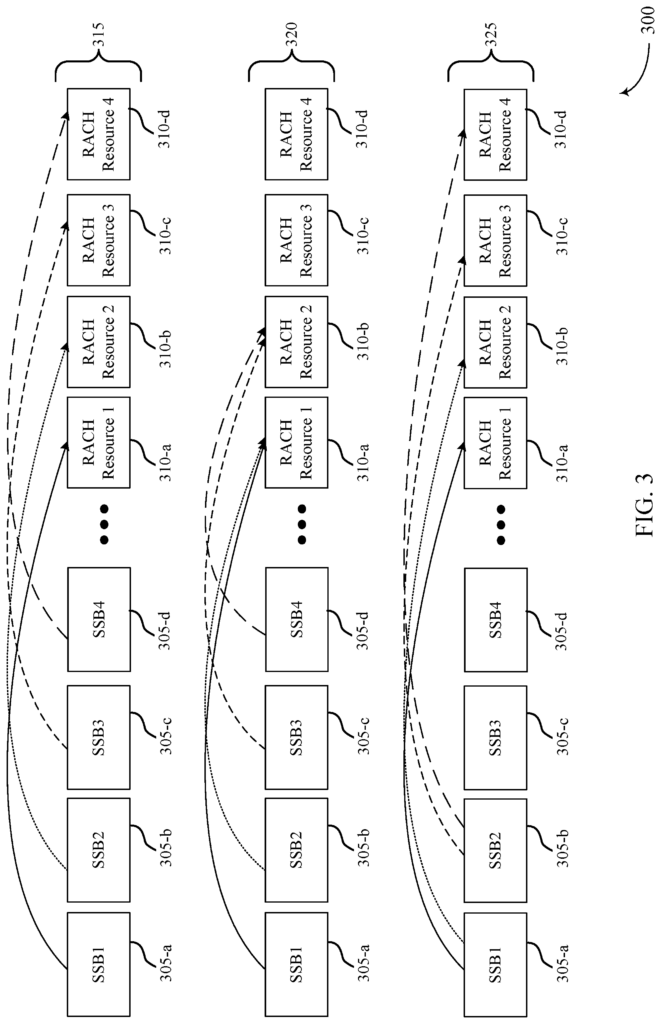
Another apparatus for wireless communication is described. The apparatus may include a processor, memory in electronic communication with the processor, and instructions stored in the memory. The instructions may be operable to cause the processor to identify a configuration for random access resources associated with one or more synchronization signal blocks (SSBs), a number of random access responses that are to be transmitted that are associated with one or more random access resources, and a random access radio network temporary identifier (RA-RNTI) for a control channel transmission associated with the number of random access responses, transmit a plurality of SSBs to at least a first user equipment (UE), receive a random access preamble from at least the first UE via a first random access resource, identify one or more SSBs associated with the random access preamble based on the configuration of the random access resources and the first random access resource, generate one or more random access response messages based on the random access preamble, the one or more random access response messages including information for at least the first UE, where the RA-RNTI is determined based on one or more of the random access resources, the SSB, or an SSB index of the SSB, used for associated random access preambles from the one or more UEs, and transmit the one or more random access response messages within a control channel that includes cyclic redundancy check bits scrambled by the RA-RNTI.
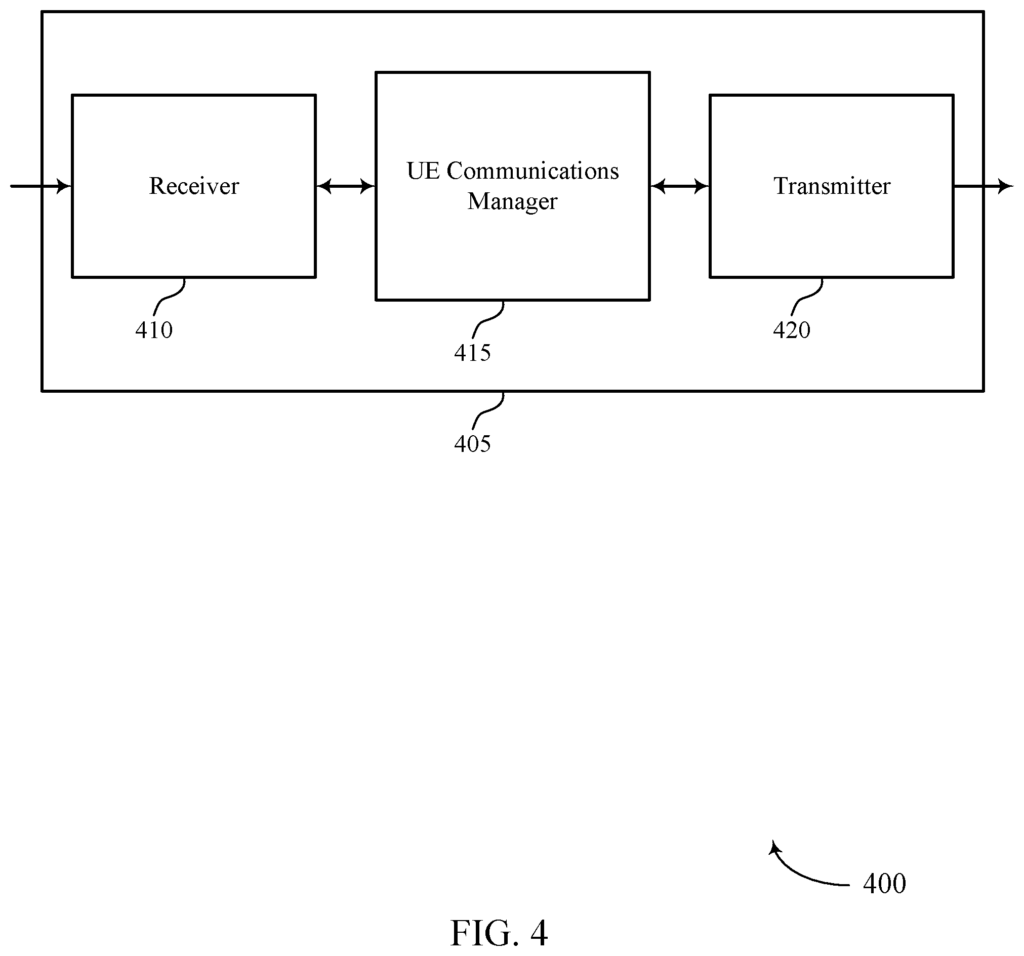
Click here to view the patent on Google Patents.
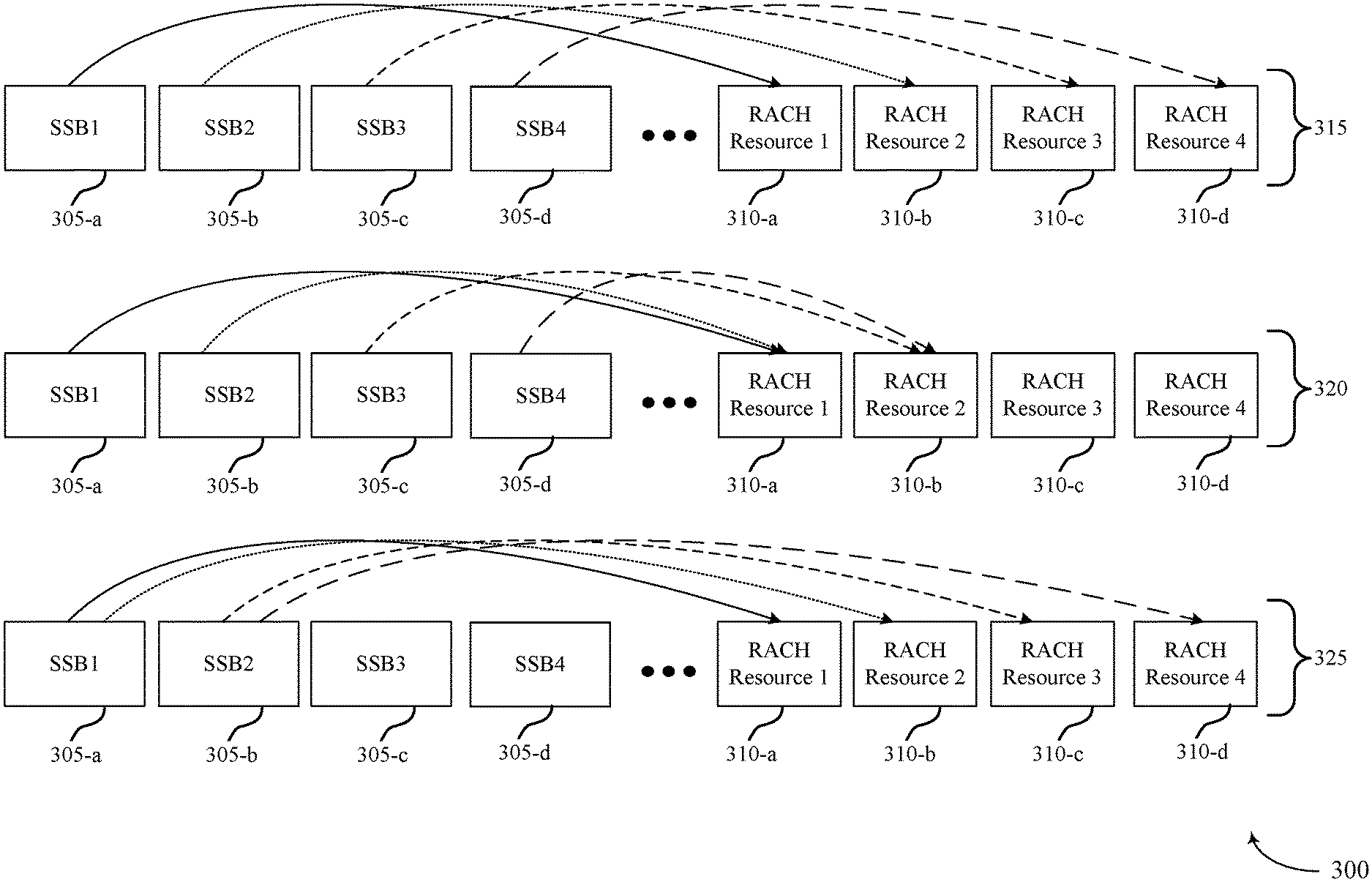
Leave a Reply